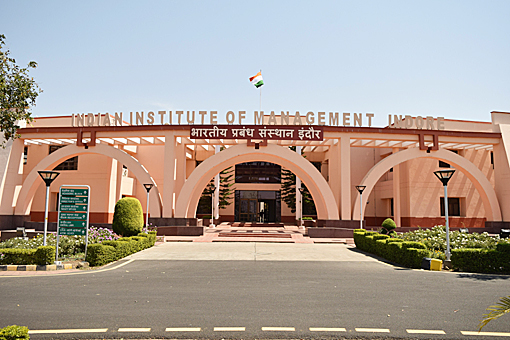Research by IIM Indore faculty: Silver Lining in Indore and other red zone districts

Infection rates and reproduction numbers on the decline
IIM Indore is conducting a series of researches around Covid-19 pandemic along with collaborators from other countries. “These researches include predictive models for Covid-19, Response analysis of leaders, Ways to build organizational resilience, Stress management, and Developing exit strategies for MSMEs”, said Prof. Himanshu Rai, Director, IIM Indore, who is himself leading some of these initiatives.
In this series, Prof. Sayantan Banerjee, faculty at IIM Indore, has been doing a study on the COVID-19 situation for different states in India along with his collaborators as a part of the COV-N Study group. “We were using a network-based epidemiological model to predict the number of infections in the state.
The primary aim of that study was to project figures for the number of infections, the possible burden on the healthcare system, and suggesting actions that can be taken by the administration at that point.”
Interestingly, their study had predicted 2500 to 3000 cases by the end of April, and the observed tally stood at 2660 on April 30. Prof. Banerjee added that the state and local administration had taken the necessary interventions, and the surge in infections in a majority of districts across the country can be attributed to the increased amount of testing (M.P. has a current testing rate of around 1035 per million).
If the trend of infection spread had continued, without necessary interventions, the current number of infections in the state of M.P. would have been more than 10000, as opposed to the current figure of 4173. Also, on the brighter side, the recovery rate currently stands at around 48%.
The study now aims to explore deeper aspects of the disease spread in M.P. In this regard. Prof. Banerjee mentioned that “We feel that providing projected figures now will lead to some fatigue, as the administration and the general population are kind of aware of what a ‘no-intervention’ strategy would lead us to.
Hence, we have now focused our attention on the district level scenario, especially the spread of infection in the red zone districts.” The results of the study show much optimism. The daily average infection rate over 7 days for Indore now stands at 3.13% as on May 13, as opposed to 8.18% on April 30. The respective figures for Bhopal and Ujjain on May 09 are 4.83% (8.18% on April 30) and 7.77% (10.36% on April 30).
“One of the fundamental quantities to look at is the reproduction number (R0, pronounced as R-naught), and if it drops below 1, that would eventually lead to contain the infection spread. We have used a Bayesian modeling approach to estimate the evolution of this R0 over time,” Prof. Banerjee explained.
The reproduction number over the past one month has dropped for all the three districts considered, and the current estimates stand at 1.543 (Indore), 1.314 (Bhopal), and 1.468 (Ujjain).
Apart from exploring the infection rate and the reproduction number, the study looked into the prevalence of co-morbid conditions in the districts, based on survey data provided by the National Family Health Survey (NFHS-4). It has been found that the male populations in the
red and orange zone districts have higher percentages of obesity, elevated levels of blood
sugar, and high levels of blood pressure as compared with the green zone districts. “We propose to undertake a detailed study exploring the population characteristics and other health factors to arrive at valid statistical conclusions regarding the effect of the presence of co-morbid conditions and disease prevalence,” Prof. Banerjee said.


